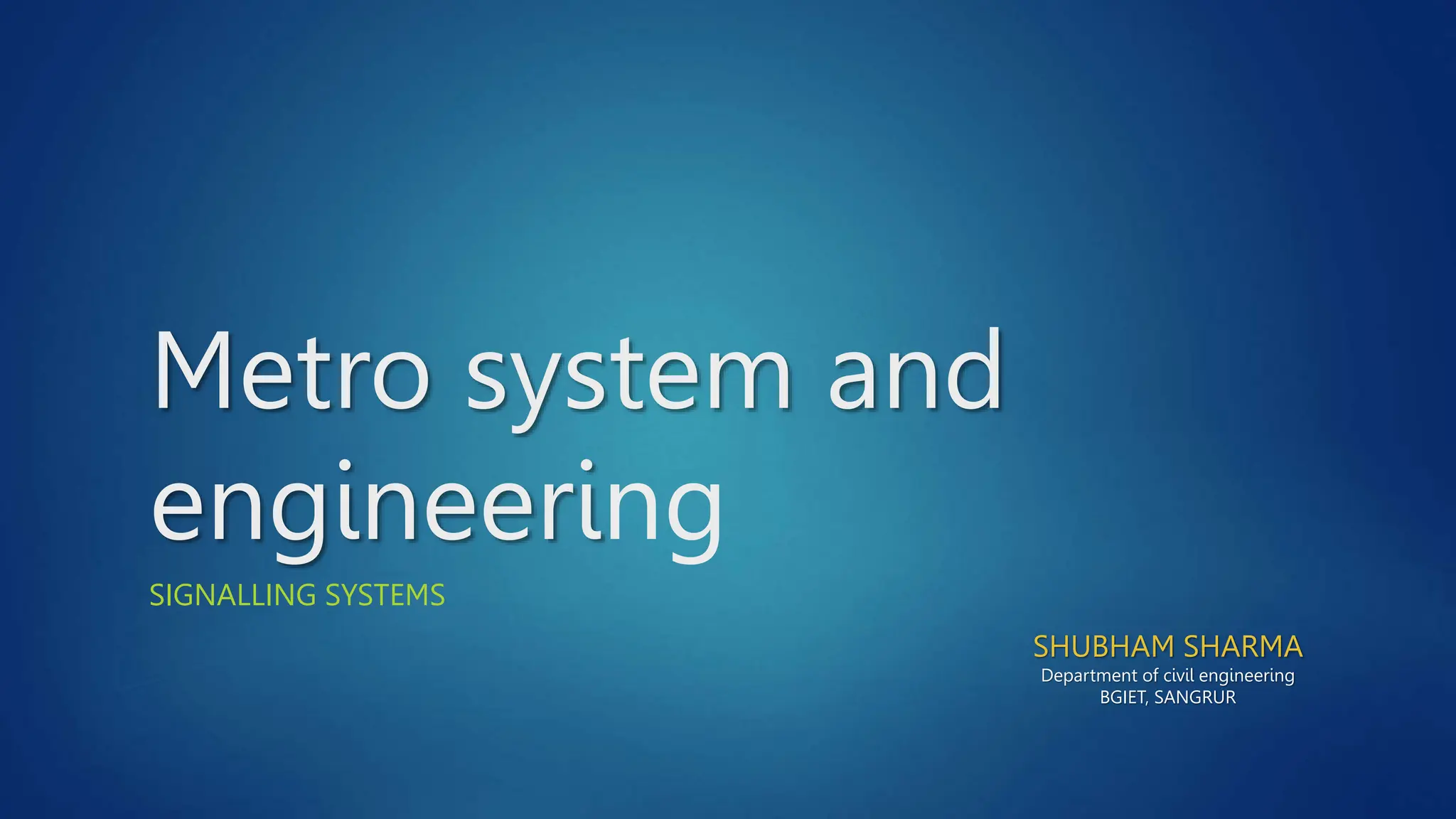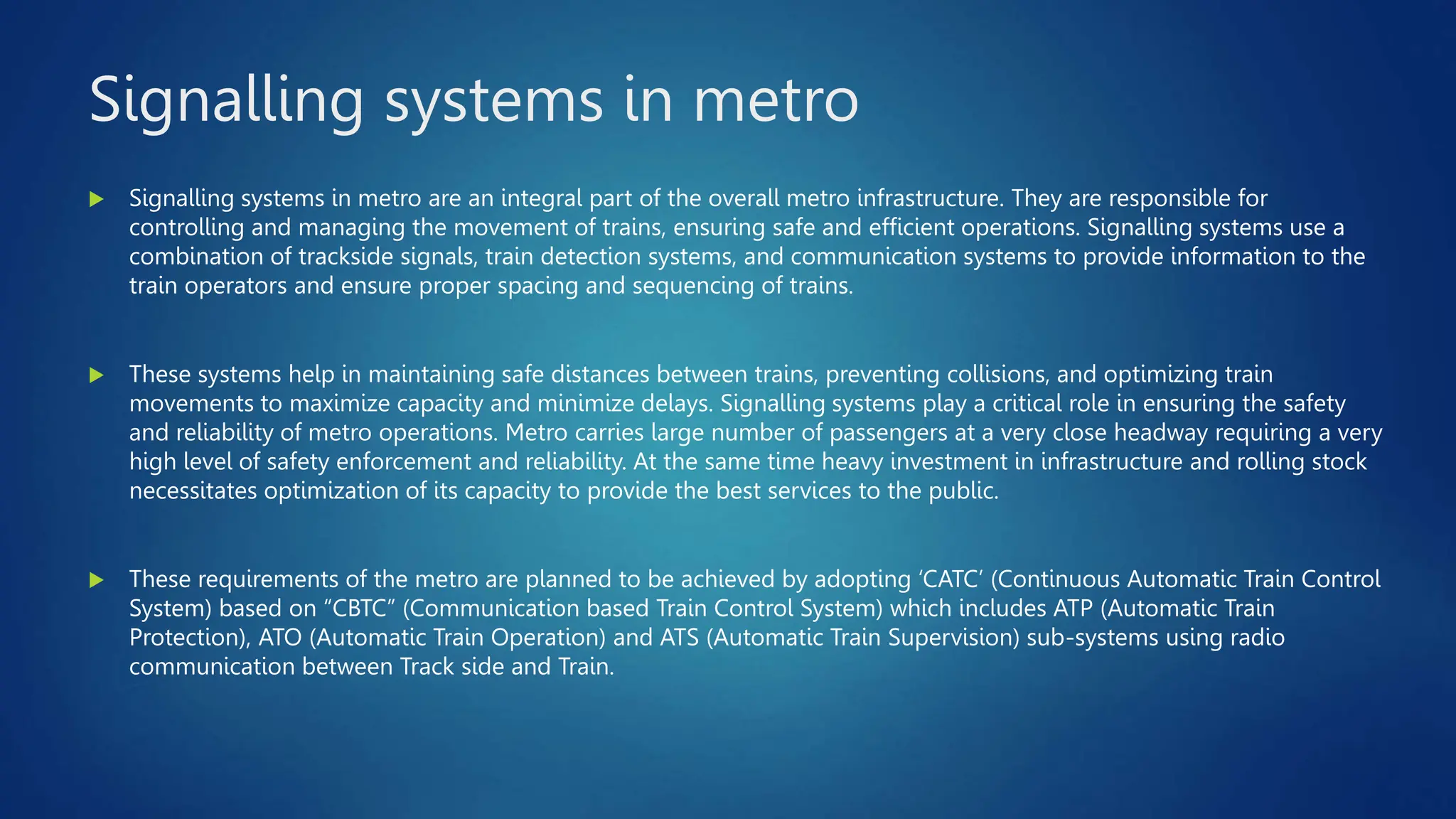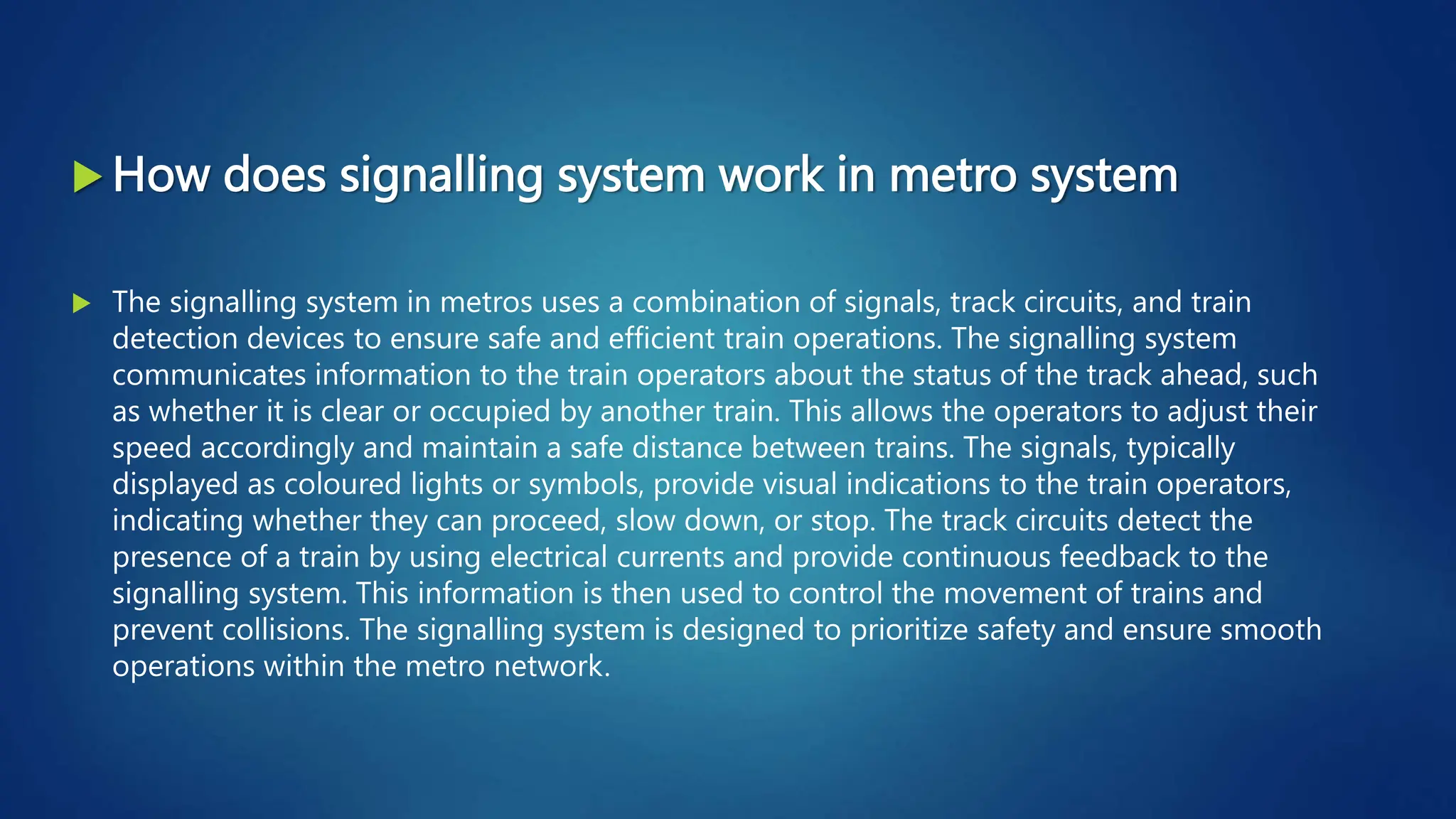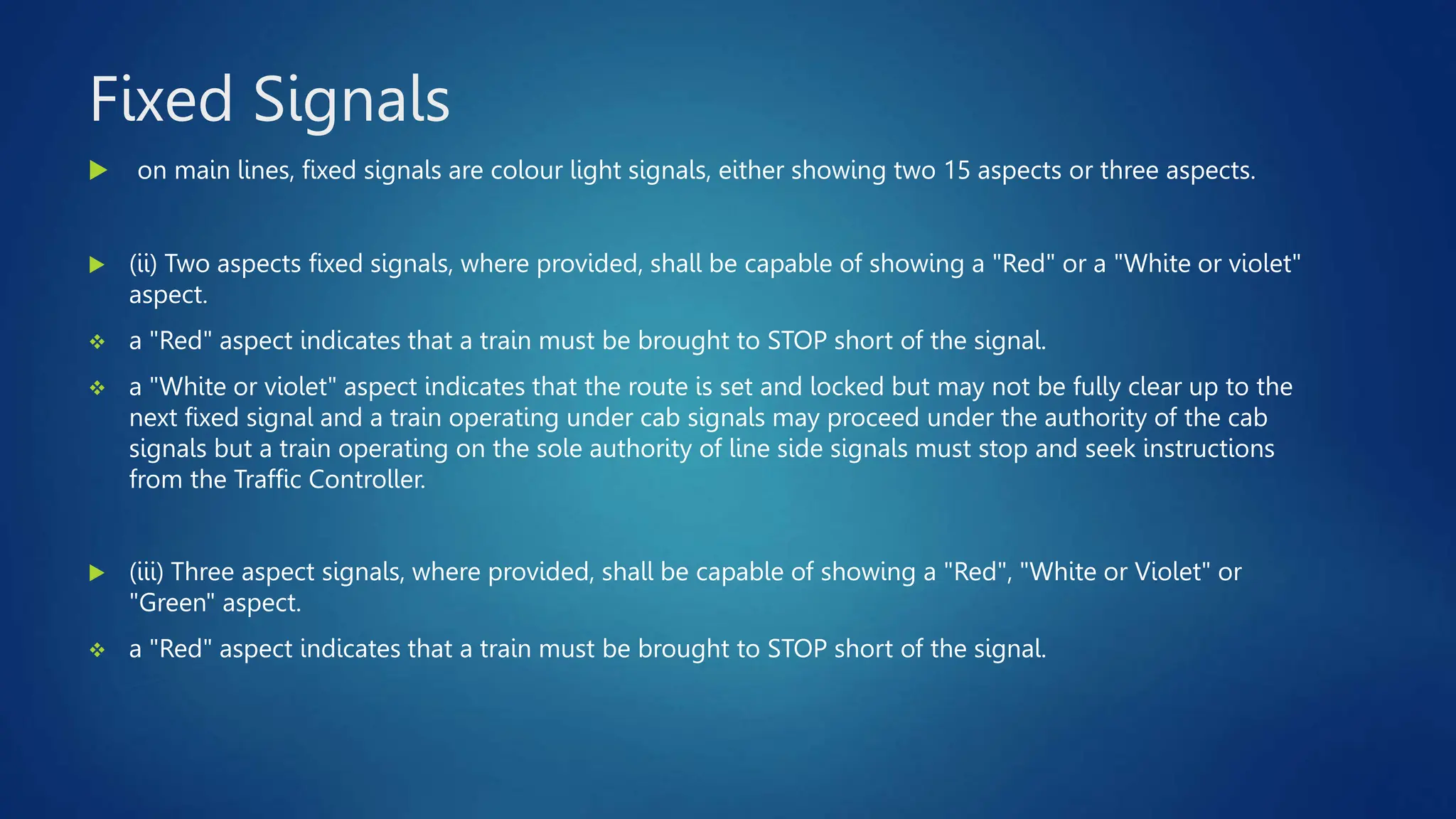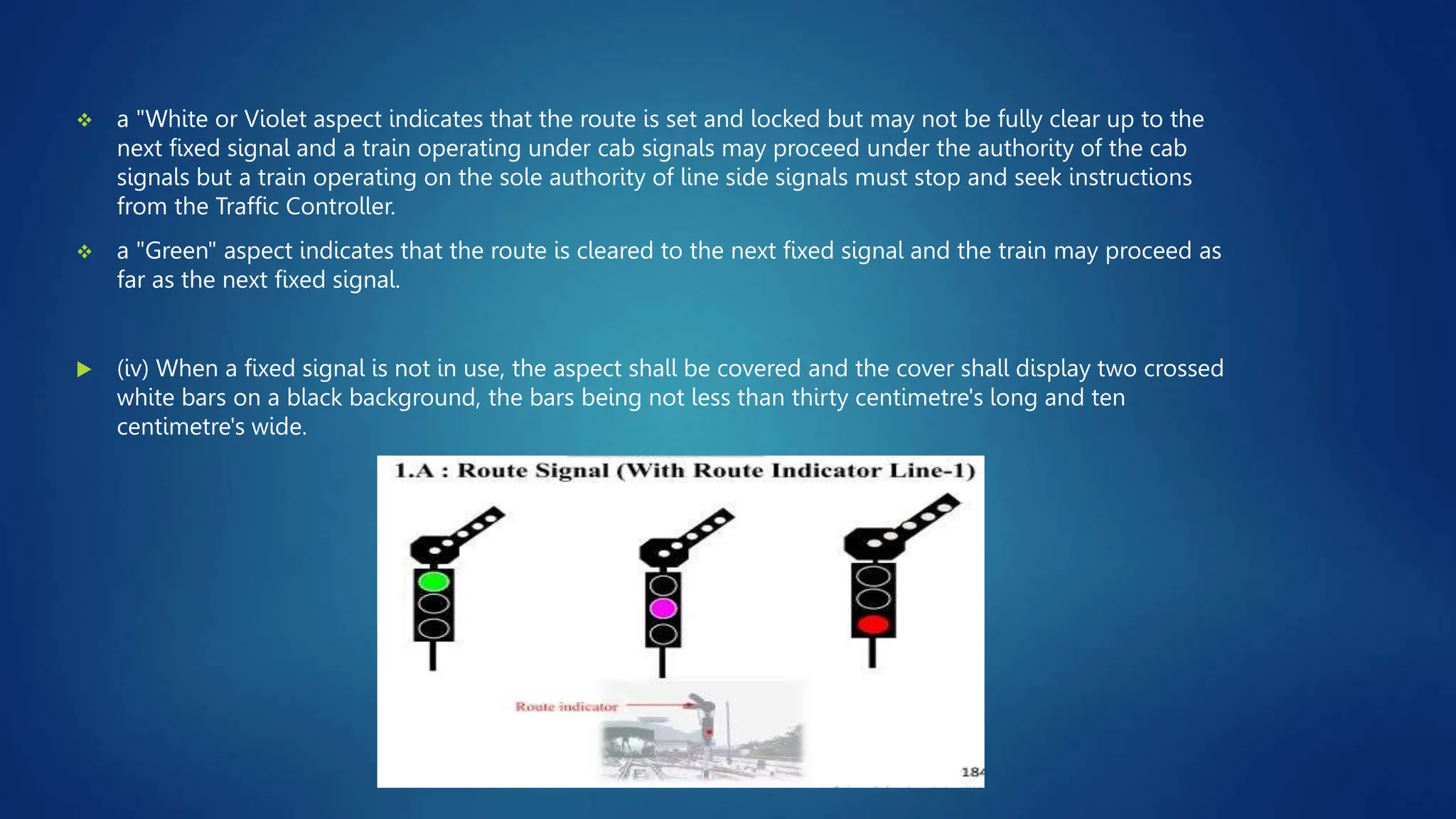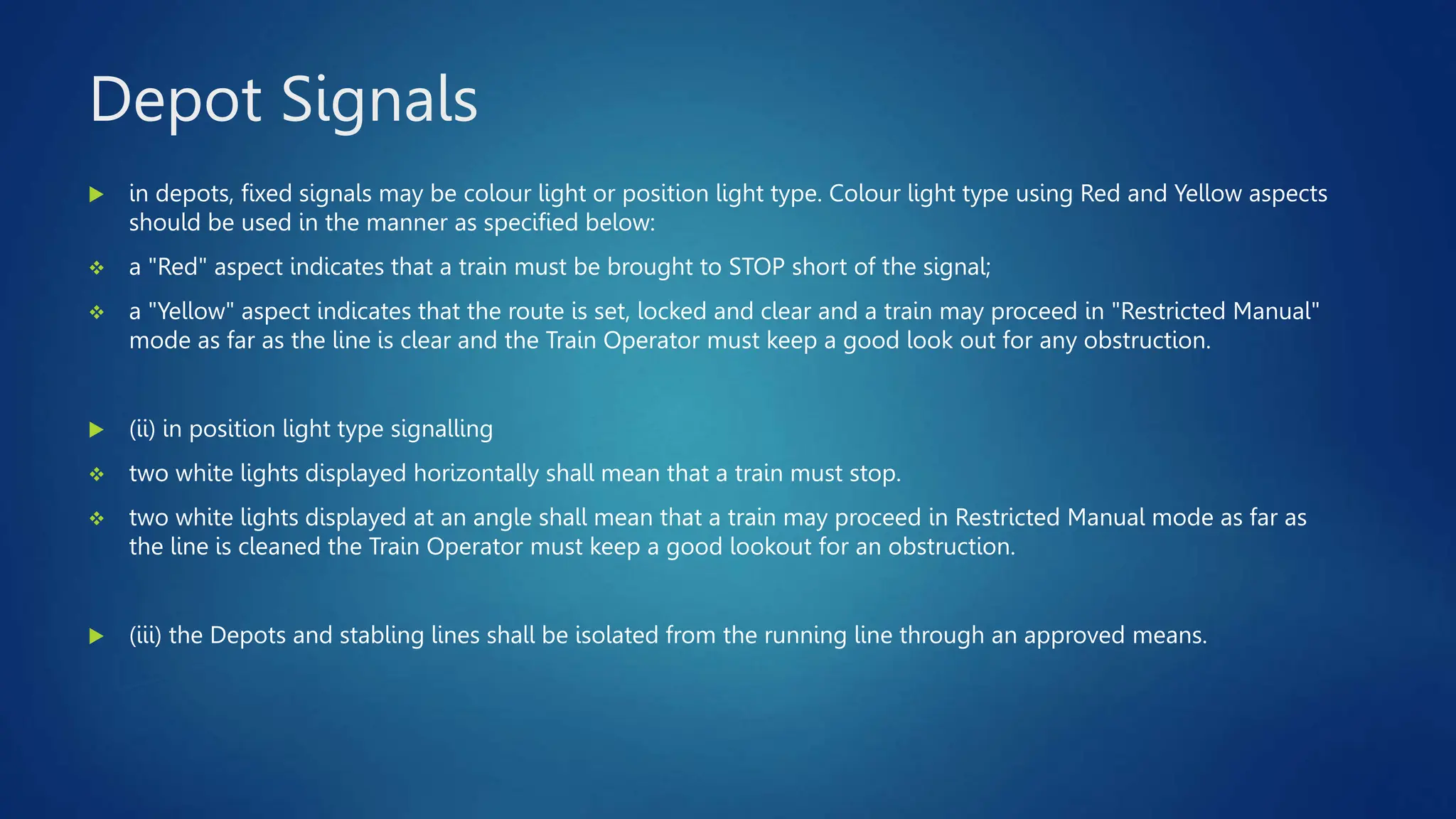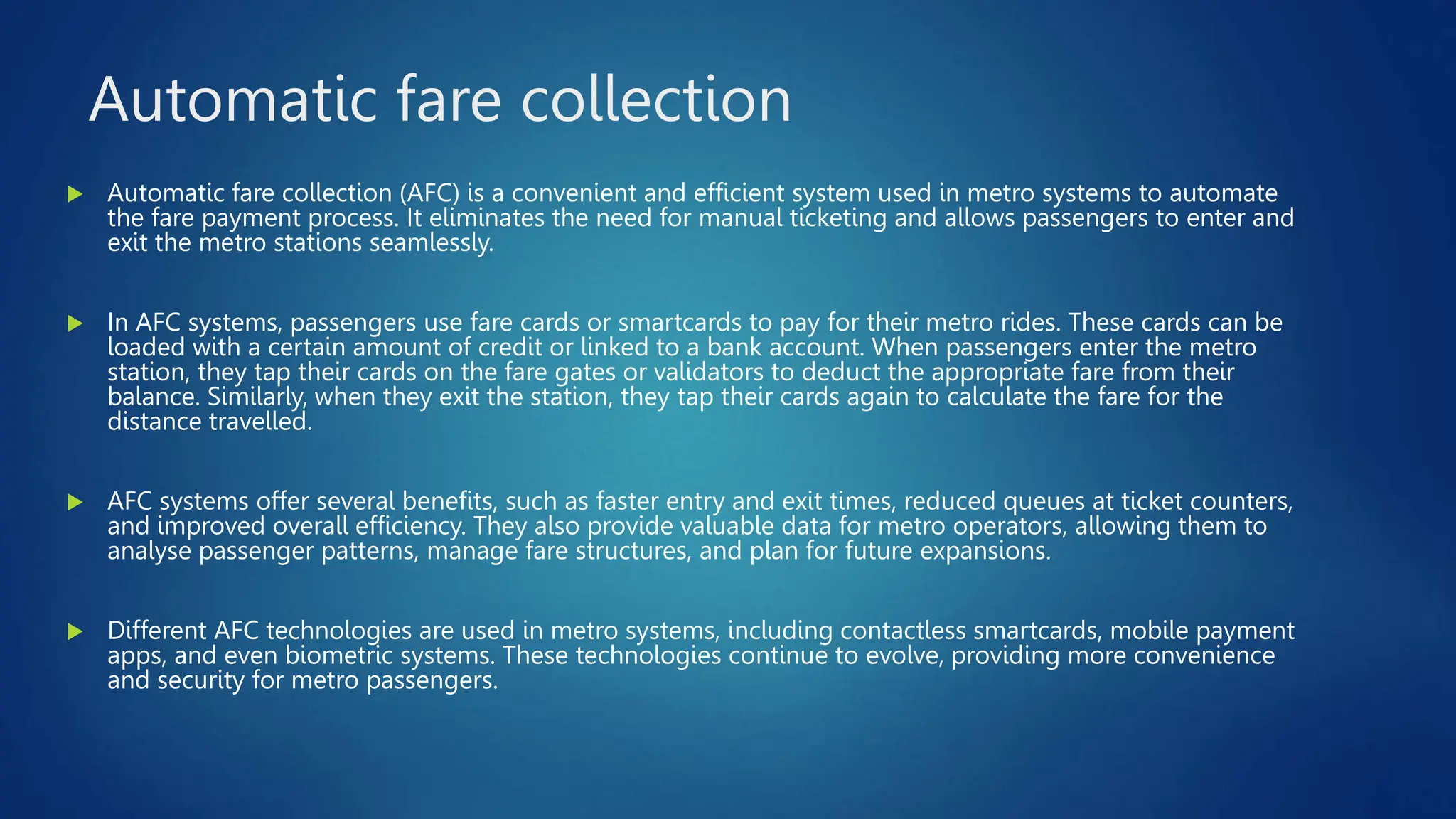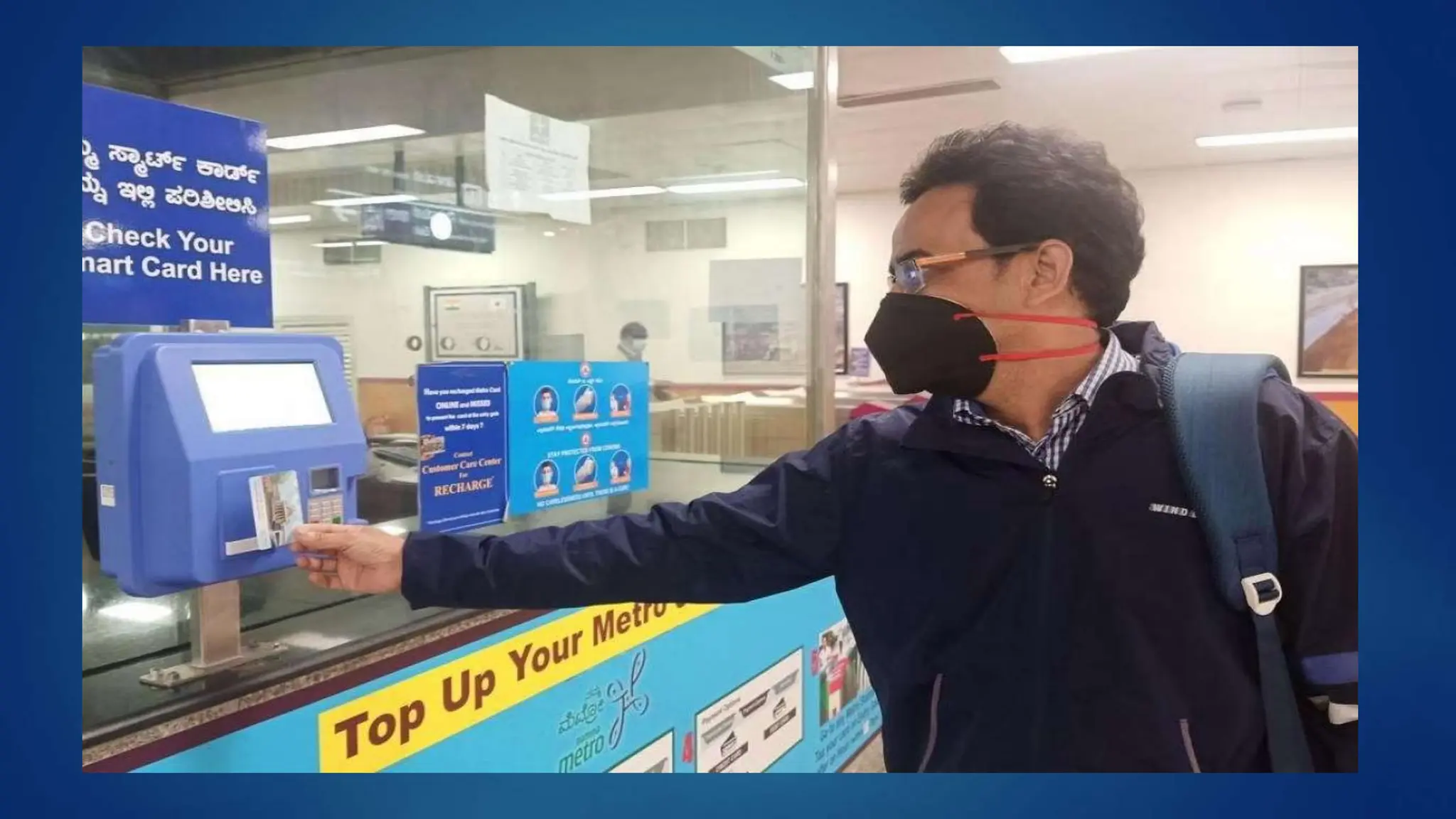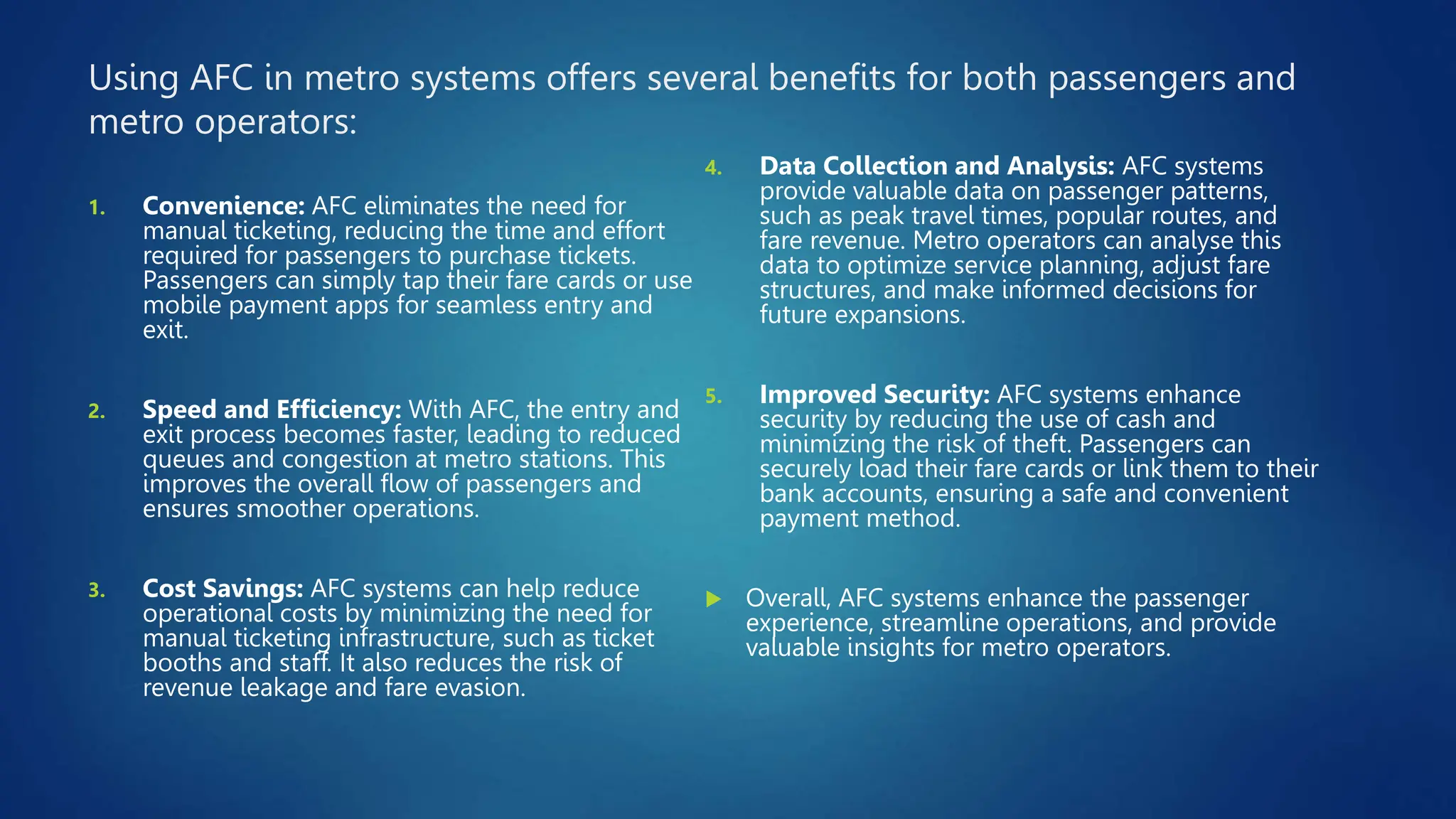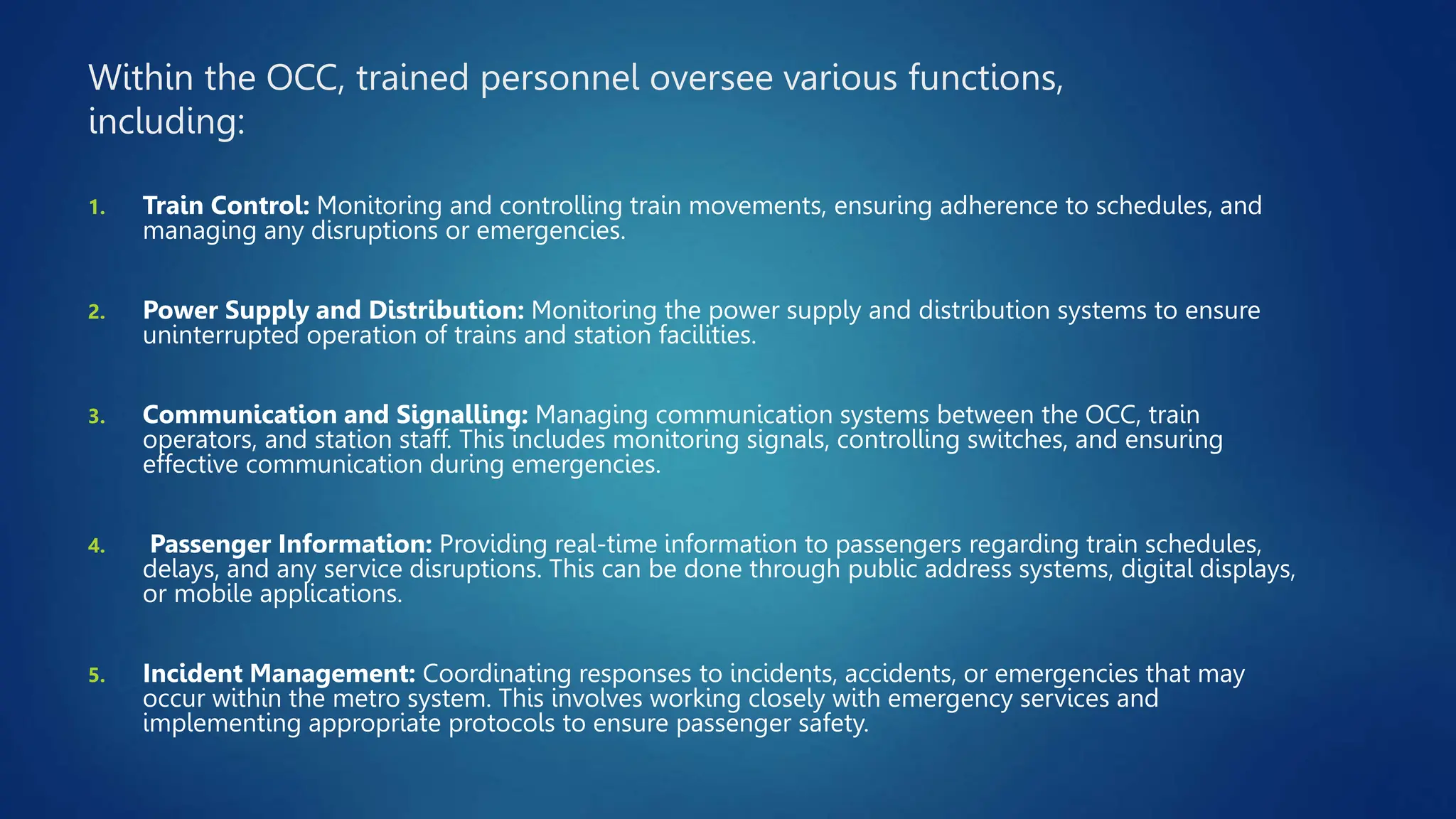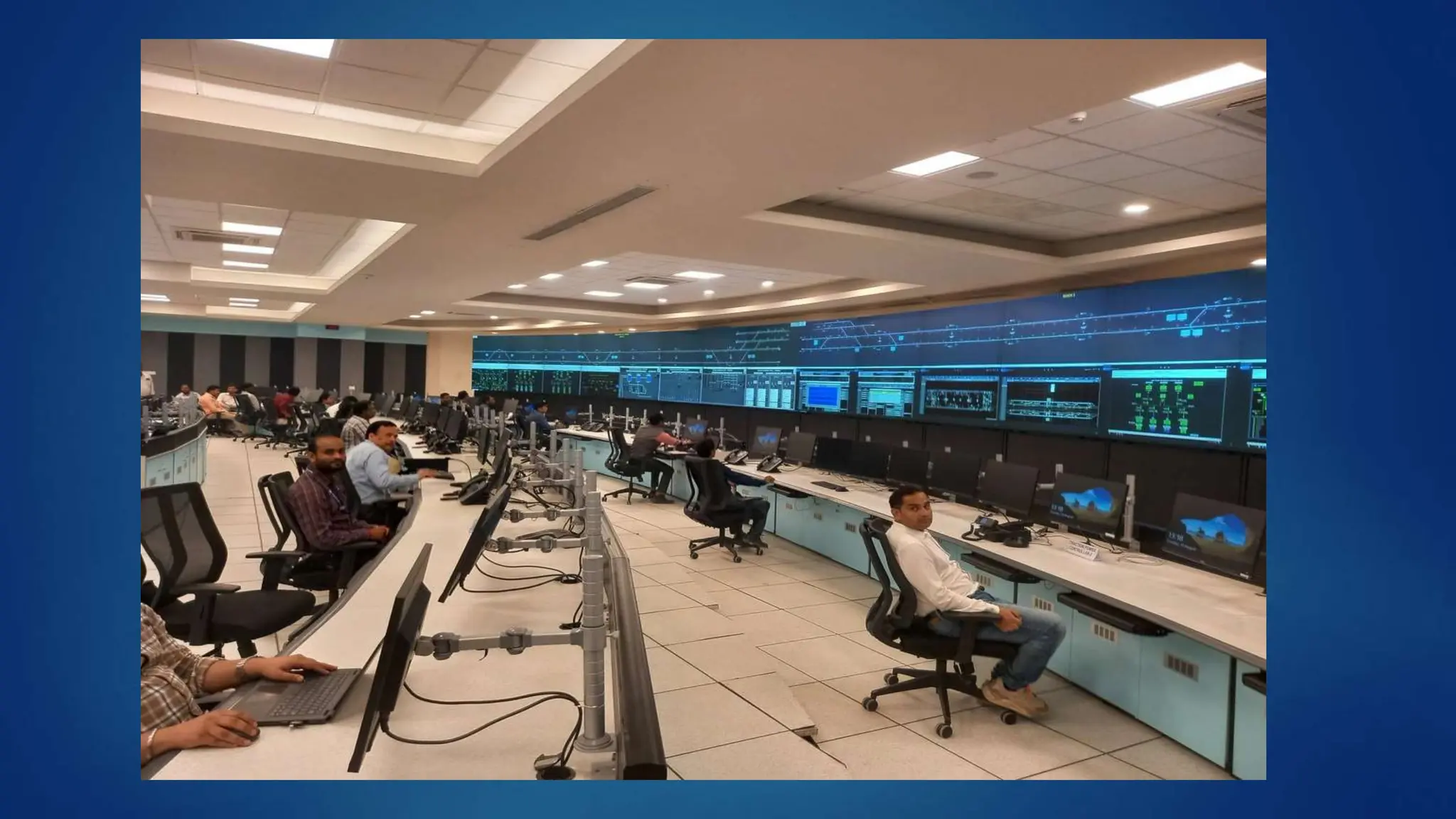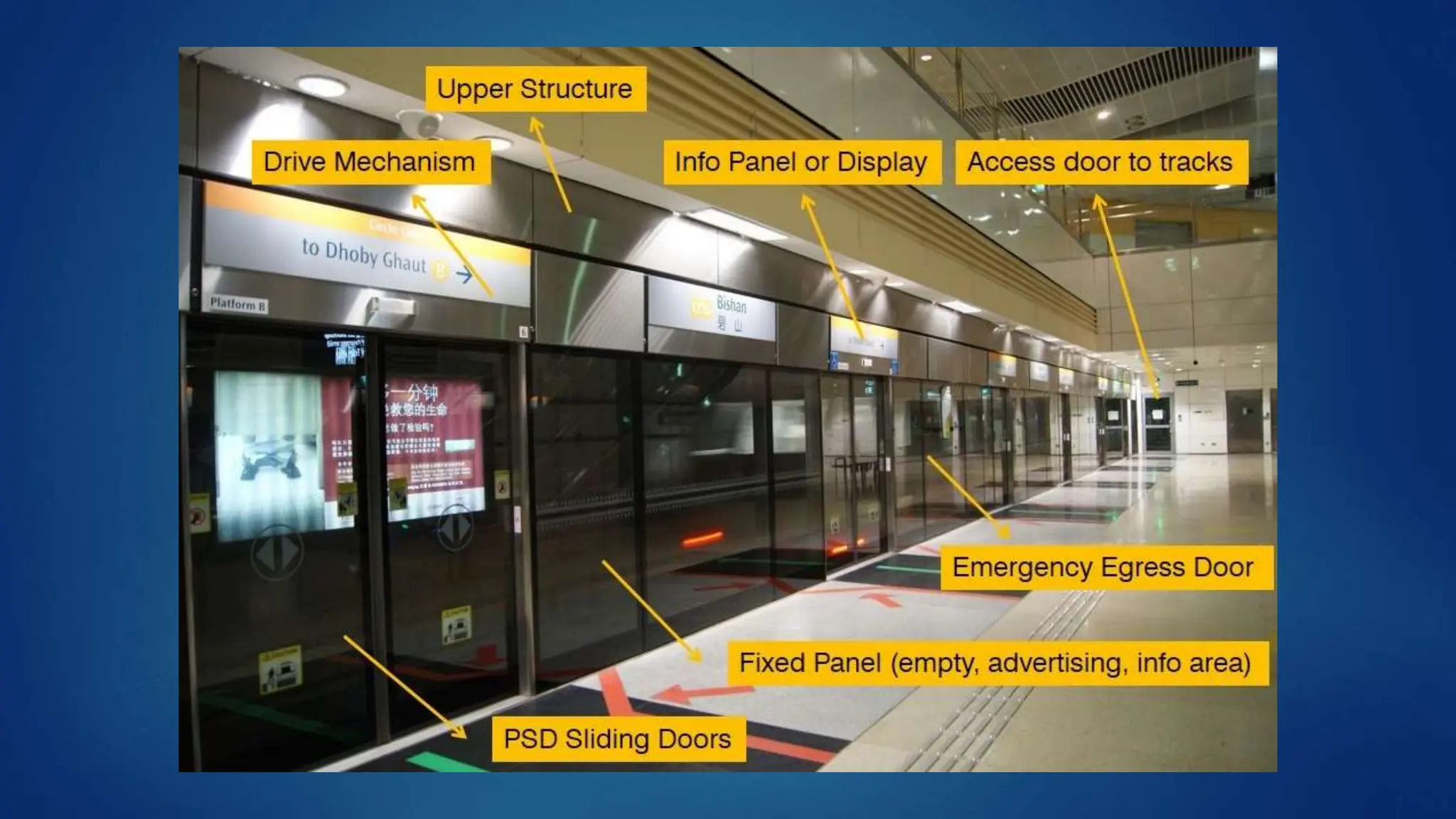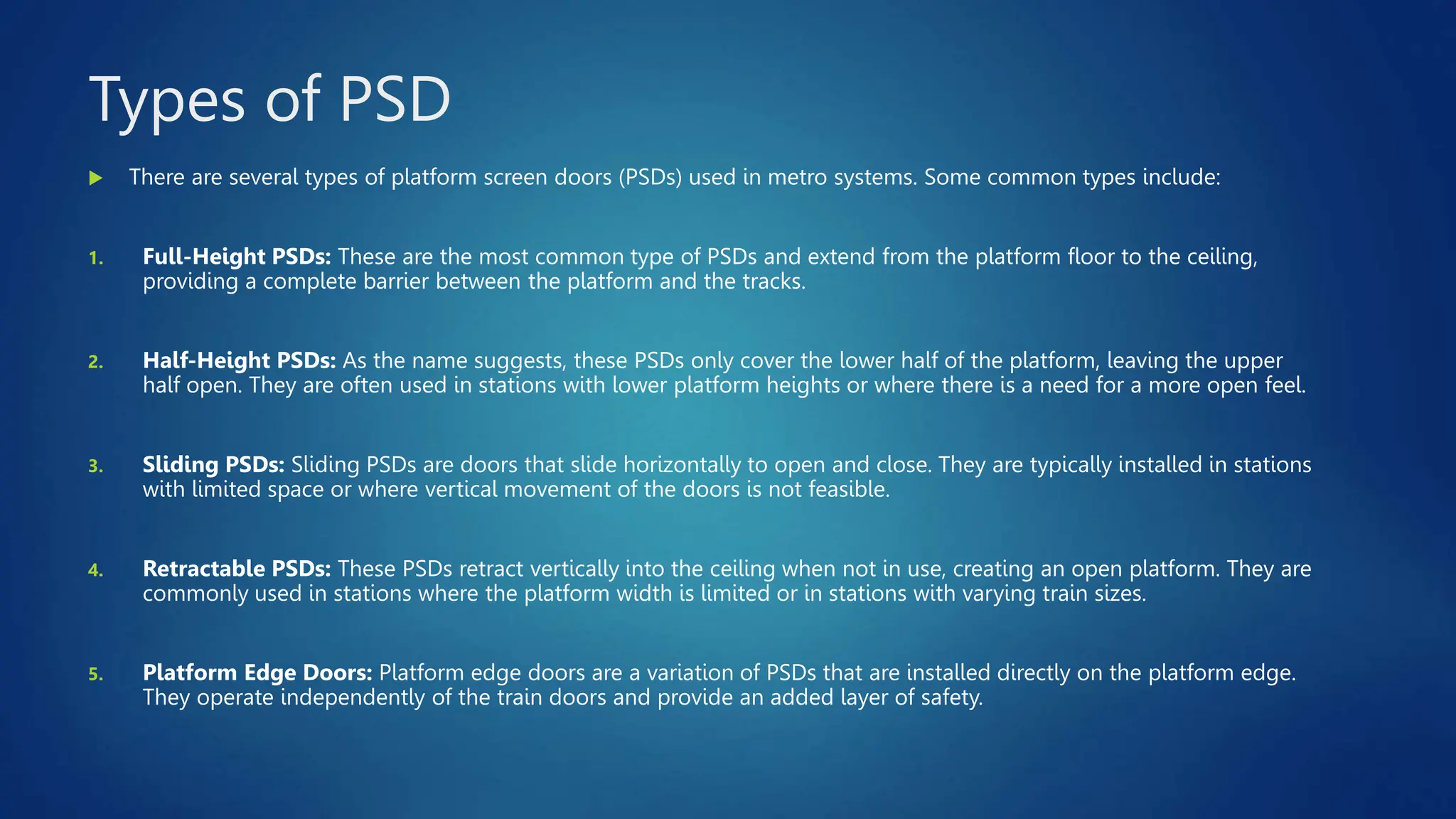The document discusses signalling systems used in metro rail systems. It explains that signalling systems use trackside signals, train detection systems and communication to safely manage train movements and spacing. It describes how Continuous Automatic Train Control (CATC) systems using Communication Based Train Control (CBTC) help achieve high safety, reliability and capacity in metro operations. CBTC integrates Automatic Train Protection (ATP), Automatic Train Operation (ATO) and Automatic Train Supervision (ATS) using radio communication between trains and tracks. This allows trains to run safely at close headways while optimizing speeds. The document also discusses automatic fare collection (AFC) systems and their benefits for passengers and operators, as well as the role of the Operation Control Centre (
